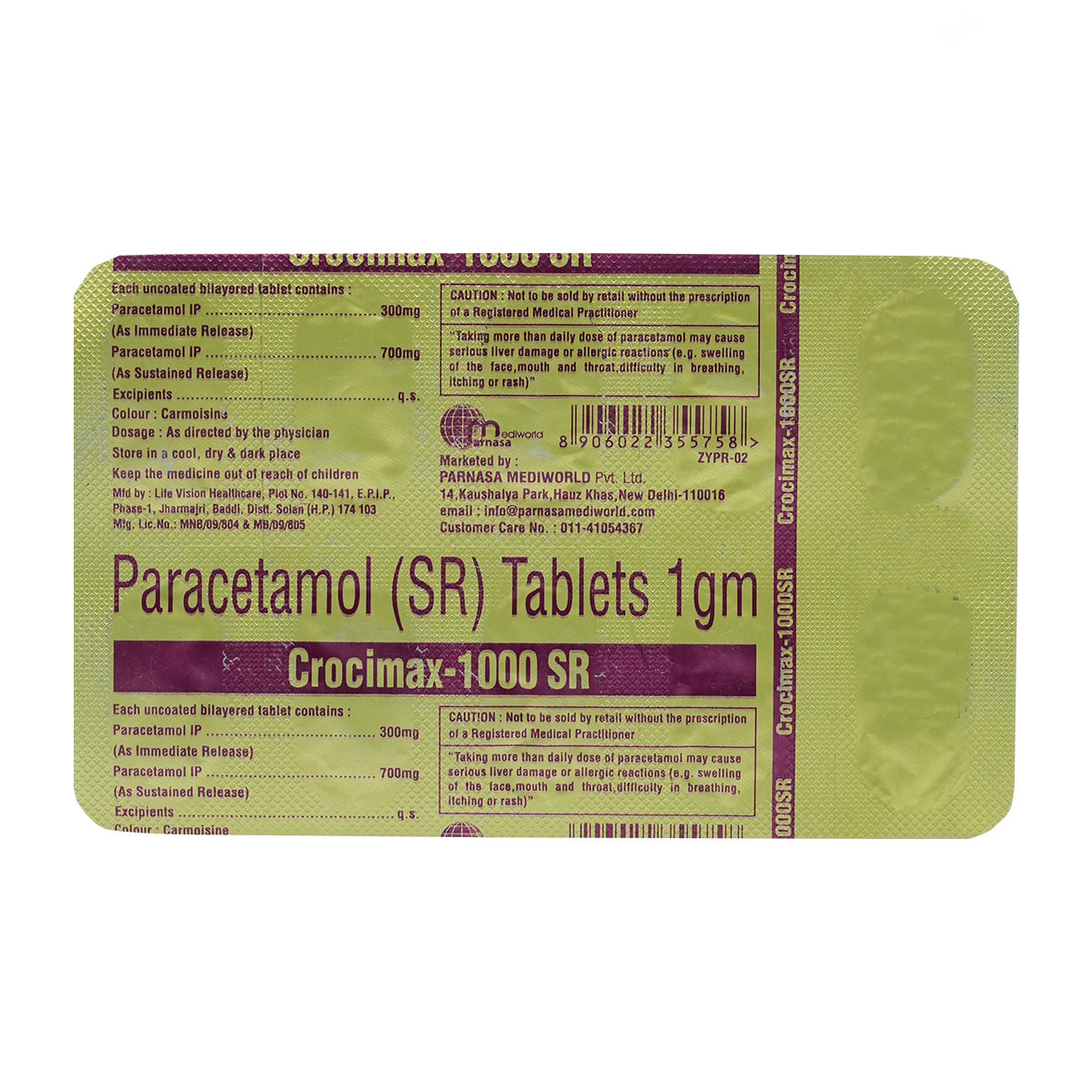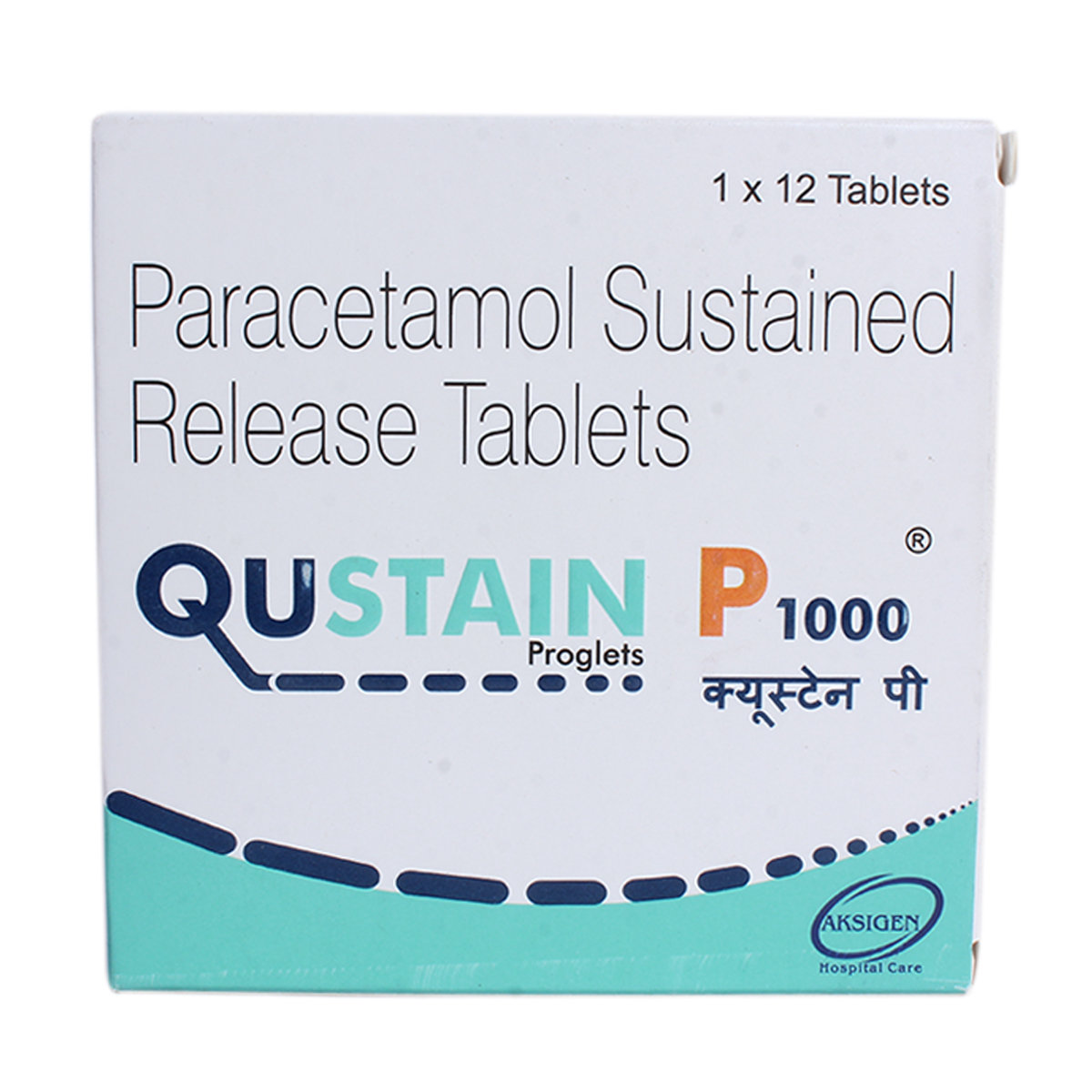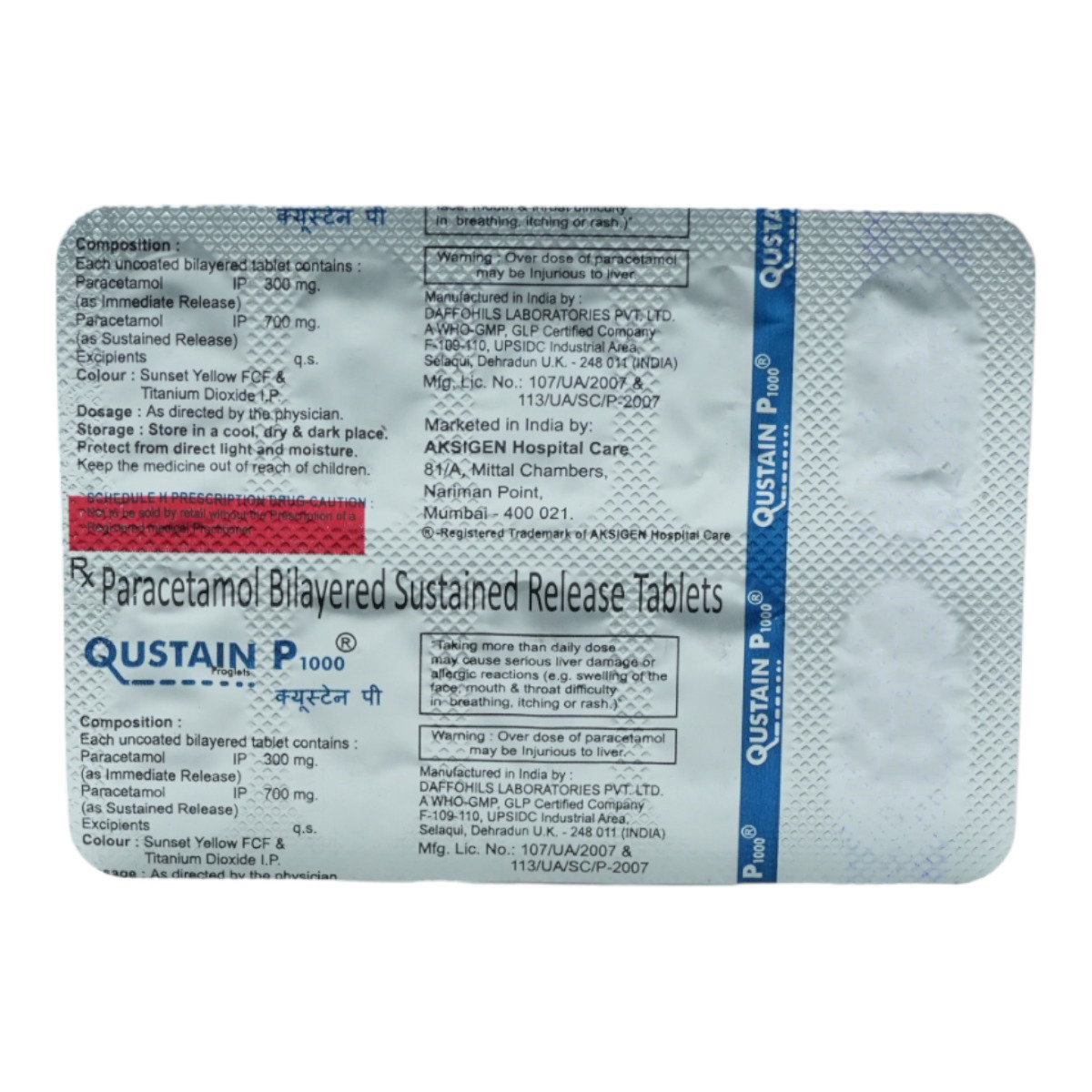Paracetamol+paracetamol
About Paracetamol+paracetamol
Paracetamol+paracetamol belongs to the group of medicines called analgesics (pain killers), and antipyretics (fever-reducing agents) used to reduce fever and treat mild to moderate pain. It is used to relieve headaches, migraine, toothache, period pain, back pain, muscle pain, and rheumatic pain. Pain and fever are caused by the activation of pain receptors due to the release of certain natural chemicals in the body like prostaglandin.
Paracetamol+paracetamol contains 'Paracetamol' that works by inhibiting the production of certain chemical messengers in the brain known as prostaglandins. Thus, reducing pain. Also, Paracetamol+paracetamol affects an area of the brain that regulates body temperature known as the hypothalamic heat-regulating centre. Thereby, it reduces fever.
Take Paracetamol+paracetamol as prescribed. Your doctor will recommend how often you need to take Paracetamol+paracetamol based on your medical condition. In some cases, Paracetamol+paracetamol may cause side effects such as nausea, stomach pain, and dark coloured urine. Most of these side effects of Paracetamol+paracetamol do not require medical attention and gradually resolve over time. However, if the side effects persist or worsen, please consult your doctor.
If you are allergic to Paracetamol+paracetamol or any other medicines, please tell your doctor. Paracetamol+paracetamol is not recommended for children below 6 years of age. If you are pregnant or breastfeeding, please consult a doctor before using Paracetamol+paracetamol. Avoid alcohol consumption with Paracetamol+paracetamol as it may increase the risk of liver damage. If you have an impaired nutritional state caused by anorexia (eating disorder), malnutrition, alcohol abuse, or if you are dehydrated, inform your doctor before taking Paracetamol+paracetamol.
Uses of Paracetamol+paracetamol
Medicinal Benefits
Paracetamol+paracetamol contains Paracetamol, an analgesic (pain killer) and antipyretic (reduces fever). It inhibits the production of certain chemical messengers in the brain known as prostaglandins. Thus, reduces pain. Also, Paracetamol+paracetamol affects an area of the brain that regulates body temperature known as the hypothalamic heat-regulating centre. Thereby, it reduces fever.
Directions for Use
- Paracetamol+paracetamol can be taken with or without food.
- It is advised to take Paracetamol+paracetamol 3-4 times daily or as advised by a doctor.
- Swallow the Paracetamol+paracetamol as a whole with a glass of water.
- Do not chew, crush, or break it.
Storage
Side Effects of Paracetamol+paracetamol
- Nausea
- Stomach pain
- Dark coloured urine
Drug Warnings
If you are allergic to Paracetamol+paracetamol or any other medicines, please tell your doctor. Paracetamol+paracetamol is not recommended for children below 6 years of age. If you are pregnant or breastfeeding, please consult a doctor before using Paracetamol+paracetamol. Avoid alcohol consumption with Paracetamol+paracetamol as it may increase the risk of liver damage. If you have an impaired nutritional state caused by anorexia (eating disorder), malnutrition, alcohol abuse or if you are dehydrated, inform your doctor before taking Paracetamol+paracetamol. Avoid taking more than recommended doses as it may increase the risk of serious liver damage.
Drug Interactions
Drug-Drug Interactions: Paracetamol+paracetamol may interact with blood thinners (warfarin), cholesterol-lowering drugs (cholestyramine), analgesics (aspirin), antibiotics (chloramphenicol, rifampicin), anti-gout medicines (probenecid), antitubercular drug (isoniazid), anticonvulsants (lamotrigine, carbamazepine, phenytoin), and anti-nausea agents (metoclopramide, domperidone).
Drug-Food Interactions: Paracetamol+paracetamol may interact with St. John’s wort (herbal medicine to treat depression). Avoid foods rich in carbohydrates, and pectin including jellies, cabbage, Brussels sprouts and broccoli as Paracetamol+paracetamol may interact with these foods. Also, avoid intake of alcohol with Paracetamol+paracetamol as it may increase the risk of liver damage.
Drug-Disease Interactions: If you have kidney or liver disease, hepatitis, Gilbert's syndrome (a liver condition), hemolytic anaemia (abnormal breakdown of red blood cells), G-6-PD deficiency (a hereditary condition resulting in low red blood cell counts), blood poisoning, inform your doctor before taking Paracetamol+paracetamol.
Drug-Drug Interactions Checker List:
Safety Advice

Alcohol
unsafeYou are recommended to avoid consumption of alcohol with Paracetamol+paracetamol as it may cause severe liver damage.

Pregnancy
cautionPlease consult a doctor if you are pregnant or planning for pregnancy before using Paracetamol+paracetamol. Your doctor may prescribe the lowest dose of Paracetamol+paracetamol and for the shortest duration if you are pregnant.

Breast Feeding
cautionParacetamol+paracetamol may be excreted in small amounts in breast milk. Therefore, please consult a doctor before using Paracetamol+paracetamol if you are breastfeeding.

Driving
safe if prescribedParacetamol+paracetamol usually does not affect your ability to drive or operate machinery.

Liver
cautionTake Paracetamol+paracetamol with caution, especially if you have a history of liver diseases/conditions. The dose may be adjusted by your doctor as required.

Kidney
cautionTake Paracetamol+paracetamol with caution, especially if you have a history of kidney diseases/conditions. The dose may be adjusted by your doctor as required.

Children
cautionParacetamol+paracetamol is not recommended for children below 6 years of age.
Habit Forming
Diet & Lifestyle Advise
- Get adequate sleep as resting the muscles can help in reducing inflammation and swelling.
- Acupuncture, massage and physical therapy may also be helpful.
- Eat foods rich in antioxidants such as berries, spinach, kidney beans, dark chocolate, etc.
- Foods containing flavonoids such as soy, berries, broccoli, grapes and green tea help in reducing inflammation.
- Maintain a healthy weight by performing regular low-strain exercises and eating healthy food.
- Avoid smoking and alcohol consumption.
Special Advise
If you have a high fever or signs of infection after using Paracetamol+paracetamol for more than 3 days or if pain persists after using Paracetamol+paracetamol for more than 5 days, please consult a doctor.
Patients Concern
Disease/Condition Glossary
Pain: It is a term used to describe any unpleasant feeling or discomfort. It occurs due to nerve damage (in cases of backache, toothache, or muscle pain) or persistent stimulation (in headaches or migraine). Pain may vary from mild to severe, depending on the underlying condition.
Fever: It is an abnormal increase in body temperature due to infection, chemotherapy, or various disease conditions. If the body temperature is 98.6°F, it is normal and if it goes above 100.4°F (38℃), it is called fever or pyrexia. Body temperature is increased in response to infection or varied problems to protect the body. Flu is one of the most common causes of fever.
FAQs
Paracetamol+paracetamol belongs to the group of medicines called analgesics (pain killers), and antipyretics (fever-reducing agents) used to reduce fever and treat mild to moderate pain. It is used to relieve headaches, migraine, toothache, period pain, back pain, muscle pain, and rheumatic pain.
Paracetamol+paracetamol works by inhibiting the production of certain chemical messengers in the brain known as prostaglandins. Thus, reducing pain. Also, Paracetamol+paracetamol affects an area of the brain that regulates body temperature known as the hypothalamic heat-regulating centre. Thus, it reduces fever.
You are not recommended to take Paracetamol+paracetamol with warfarin as co-administration of these two medicines may increase the risk of bleeding more easily. However, if you are supposed to use these medicines together, you are advised to contact your doctor so that the dose may be adjusted appropriately to use safely.
Paracetamol+paracetamol may affect how certain tests work such as blood sugar tests and uric acid tests. Therefore, if you are about to undergo blood tests or any laboratory tests, inform your doctor or lab technician that you are taking Paracetamol+paracetamol.
You are not recommended to take Paracetamol+paracetamol with other paracetamol containing products as it may cause paracetamol overdose.
If you take more than prescribed doses of Paracetamol+paracetamol, it may cause overdose and lead to serious liver damage. The symptoms of overdose include vomiting, loss of appetite, stomach pain, paleness and nausea. However, if you notice any of these symptoms while taking Paracetamol+paracetamol, please consult a doctor immediately.






